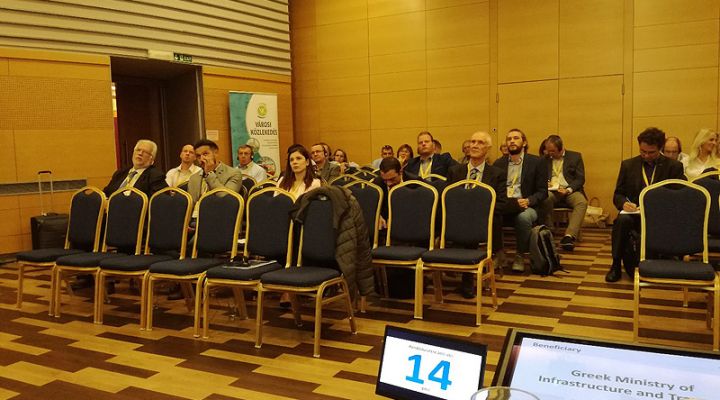 This web site is exclusive responsibility of the author. European Union bears no responsibility for information published here.
This web site is exclusive responsibility of the author. European Union bears no responsibility for information published here.
Final workshop of Crocodile 2 project
31.10 2019.

The Hungarian Transport Conference in Eger, which took place from 15 to 17 October 2019, provided a professional yet placid backdrop for the final workshop of CROCODILE 2. In a dedicated public session, all Member States were given the possibility to summarise their outcomes of the second phase of CROCODILE and look ahead on their follow-up activities.
One of the most crucial aspects from corridor perspective was the work done in the field of cross-border coordination. The basics were already set out in the first phase of CROCODILE and have provided a reliable foundation for subsequent initiatives, including both organisational and technical improvements such as contract development, digitalisation of processes, upgrading of traffic control centres or improved end user services based on the utilisation of DATEX II. The central European area has proved to be a driving force for harmonising traffic and information flows and motorway operators, together with public authorities, have been committed to their strategic role. The European ITS Directive (2010/40/EU) acts as a backbone, together with its supplementing delegated regulations for truck parking, safety-relevant traffic information as well as real-time and multimodal data.
Truck parking places have been upgraded all across the CROCODILE 2 corridor. Information has become more transparent with improved detection of free spaces and easy-to-understand on-trip information for truck drivers. More than 650 parking spaces were improved in terms of their equipment and integrated into digital management systems, which allows for better planning and a more consistent occupation of available parking places.
The improvement of traffic monitoring has been an important topic from the very beginning of the CROCODILE corridor. Cameras are still the means of choice for gaining comprehensive yet detailed impressions of traffic situations and density and more than 500 cameras have consequently been installed all along the CROCODILE 2 corridor. Processing and management takes place inside the traffic management and control centres, which were accordingly upgraded on national and regional level. Austrian motorway operator ASFINAG disclosed a significant increase in camera and webcam coverage of their motorway network (advancing from 78% in 2016 to 87% by the end of 2018), whereas the latter are also being made available for end user applications. This includes their own app as well as the services of neighbouring countries Hungary, Slovenia and Germany, thereby emphasising the multi-Member State approach.
In this context, it is also important to emphasise the importance of ongoing transnational cooperation in the matter of Traffic Management Plans (TMPs), responding to the changing needs of cross border traffic and transport. One prerequisite for cross-border TMP implementation is to ensure the availability and localisation of information on the current traffic situation in the DATEX II format. Together with the analysis of bottlenecks and the upgrade of equipment, measures on cross-border level can be elaborated, implemented and evaluated. This has already had important impacts during tourist seasons, for transit traffic management and in case of unusual events. The TMP-related activities carried out in CROCODILE 2 will enable the adoption of common strategies during critical events within and across borders, namely communicating and sharing data and information with other traffic management centres of other countries in accordance with the ITS Directive.
National Access Points were established and set into operational mode in each of the 11 CROCODILE 2 Member States. As of 2019, they cover mostly data for truck parking, safety-relevant traffic information and real-time data. While some are set up as registry referencing to available data, others contain actual data sets. No matter which approach is pursued, all of them add to the converging of high-quality data availability throughout Europe and thus serve as basis for enhanced traffic management, network analysis and end user services.
End users can be reached through various channels, to which all partners in CROCODILE 2 have pursued different approaches. Apps and web services were improved, however social media are increasingly utilised for not only delivering information but also to interact with users and receive feedback.
However the consortium has become smaller in CROCODILE 3, the acclaimed concept of the project workshops will continue to serve as a forum for the most relevant issues in transnational coordination of traffic and transport management.